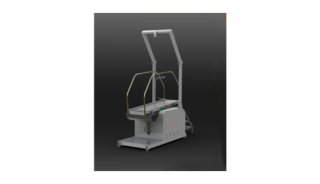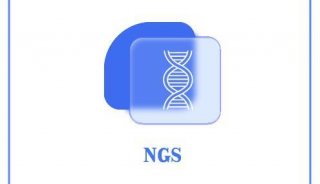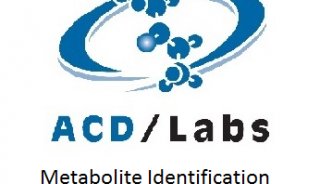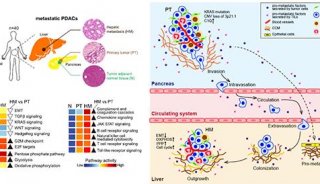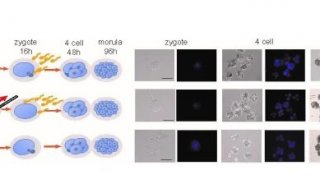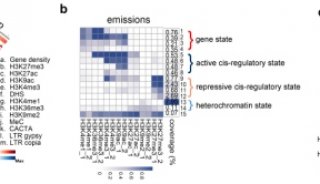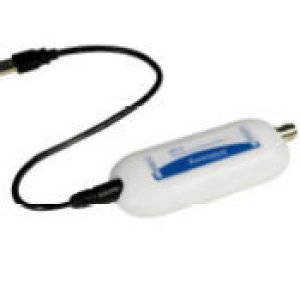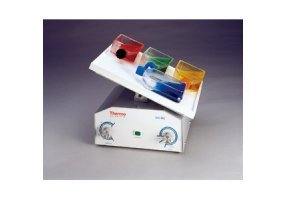sothing about Genome walking
Can anyone recommend a good kit for genome walking? I would like to find out the promoter sequence of a known gene. Is genome walking the way to do it?
thanks a million for any suggestions!
-kiwi-
Kiwi-
I use the Universal GenomeWalker Kit from BD Biosciences. The kit includes restriction enzymes to cut the DNA and adapters to ligate to the DNA, as well as primers specific to the adapters. It does not include the polymerase, although you can buy a supposedly optimized polymerase from BD.
The kit works OK, and is not too expensive. The one difficulty I had is finding a polymerase which worked on my templates. The controls with the kit (human DNA) worked fine with all the high-fidelity polymerases I tried, but most wouldn't work on my plant DNA. I settled on the Extend High Fidelity Polymerase system from Roche, and the Phusion polymerase from MJ Research.
Otherwise, I was somewhat disappointed in that the kit, which hasn't been updated recently, doesn't really seem to take advantage of the long amplification distances possible with the newest polymerases. Most of my amplicons were 3 kb or less; the longer ones were all amplified from both ends by the adapter primers, rather than my gene-specific primer. I don't know if there are other kits out there that make better use of the current technology.
Hope this helps.
Turtle
-turtle-
--------------------------------------------------------------------------------
Hi Turtle,
Thanks for the information. I am still a bit clue-less. I am quite new to this technique...After i use the enzymes from the kit and get the bands that i want, do i clone them and sequence them using the same primers that i designed for the initial PCR reaction? Which vector should i use? Do you have any to recommend?
Also, have you heard of Seegene's DNA Walking SpeedUp™ Premix Kit? I saw it on the net. Like all products, they claim that they are good.
Thanks once again!!
Kiwi
-kiwi-
--------------------------------------------------------------------------------
Kiwi-
I sequenced my bands directly, without cloning. I have a beastly time with cloning larger (>500 bp) fragments of ryegrass DNA, so I try to avoid doing so
I have used the nested gene-specific primer for sequencing the GenomeWalker fragments; it works OK but you have to be very careful not to degrade the 5' end of your fragment or the primer won't bind. Primers are relatively inexpensive, so I often nest a third primer inside my nested gene-specific primer and use that for sequencing. Theoretically I suppose you could use the nested adapter primer for sequencing also, although I have never tried this.
I've never heard of the Seegene kit. BTW, what species are you working on?
-Turtle
-turtle-
--------------------------------------------------------------------------------
Hi Kiwi,
Why don't you try a sucide plasmid directed mutagenesis. As your gene is known, you can clone it (or a part of it) into a plasmid that will not replicate in your strain. So, you are going to do a site specific recombination. After cutting the DNA with enzymes that do not cut your plasmid you are able to recover the sequence flanking the insertion site. Now you have your region of interest on a plasmid.
-Sphingoman-
--------------------------------------------------------------------------------
Hi Kiwi,
Which organism are you working on? If possible, try to get the sequence from database, such as ensembl, ucsc genomic database.
Many years ago I used Clontech's genome walking kit and had successfully cloned a promoter region which is GC rich. I think they are (now BD) still selling that kit.
QUOTE
do i clone them and sequence them using the same primers that i designed for the initial PCR reaction? Which vector should i use? Do you have any to recommend?
You can do a direct sequencing using both primers used for PCR. If you do want to clone it, just do a TA cloning. I recommend Invitrogen's Topo TA cloning kit.
-pcrman-
--------------------------------------------------------------------------------
Hi all,
Me working on mouse and human genes now. I used to work on plants so now am a bit phobic on starting on something new.
I heard before (during my plant days ) that the TOPO TA cloning kit is good. Is there a limit to the size of the insert that it can take? I was told to clone at least 2kb insert.
On the other hand, direct sequencing seems like a good idea although i have some friends who tell me its impossibly difficult to direct sequence. Is that true?
I just saw a splinkerette method on the net....has anyone tried that before??
To Sphingoman:
Do you have any good reference or article for me to read on the sucide plasmid directed mutagenesis method?
Thanks a million for all the input!
kiwi
-kiwi-
--------------------------------------------------------------------------------
2 kb is OK with TA cloning. I don't see any difficulties in direct sequencing. The only problem is you may not get the full sequence by two (using upstream and downstream primer) sequencing reaction. In that case, you have to design a new primer on the newly obtained sequence to sequence the rest of it. But this problem also applies to sequencing after cloning.
-pcrman-
--------------------------------------------------------------------------------
I have another query:
I am working on the mouse genome and since the entire mouse genome is known, is it better to 1) genome walk in order to "fish out" the promoter sequence or 2) to design primers and run a normal PCR to "fish out" the promoter?
If I use method 2), is there a limit to the length of the PCR product that i can obtain using Taq polymerase available in the market? Which brand/kind of Taq would be recommended?
blur,
kiwi
-kiwi-
--------------------------------------------------------------------------------
In that case, I don't think you need to do a genome walk to find the upstream sequence since it is already known. If you want to clone it for the characterization of the promoter sequence, just do a PCR cloning. Certainly there is a limit in product size a taq can amplify but usually what a taq can amplify (for example, several kb) is sufficient for your purpose. There are DNA polymerases specifically made for long-distance PCR or high fidelity PCR.
-pcrman-
--------------------------------------------------------------------------------
hi ,all
I want to ask that the Tm's of AP1 and AP2 are 59¡ãC and 71¡ãC,which is written in the USER MANUAL,but I get 51.1¡ãC and 57.9¡ãC in the software of PRIMER PREMIER 5.0. If I use different softwares I will get different TM values, but they are all lower than those in the USER MANUAL. So whether I should correspondly low the special primers(GSP)'s TM values( recommended >=67¡ãC), when I design them.How do you deal with them .Thank you!
-edss-
--------------------------------------------------------------------------------
what I said above is all about the Universal genomewalker kit
-edss-
--------------------------------------------------------------------------------
edss-
Yes, you will get different Tm estimates for primers using different software, as each uses a slightly different formula to calculate the Tm. I use the Genomewalker kit. I haven't figured out why the Tm of AP1 is so low when they say to design your genespecific primers with a Tm of 70... However, the best way to determine the annealing temperatures to use is trial and error. If you have access to a gradient thermocycler, I'd run a test on one or two samples using annealing temperatures from below 60 to 72.
I have found that an annealing temp of 65 works well with my samples and genespecific primers. I am using Expand polymerase systems from Roche, which preferentially extend at 68, and peltier-device thermocyclers from MJ Research. BTW, I work on grass. I have also found that I can get the human DNA supplied as a control with the kit to successfully amplify under conditions which won't amplify the grass DNA.
Hope this helps.
Turtle
-turtle-
--------------------------------------------------------------------------------
Turtle :
Thanks for your useful help! I will try it as you said .
And I also have a question:
when you design the two nested primers GSP1(genespecific primer)and GSP2, what is the best distance from the GSP2 to the 5'end of my DNAsequence(when i want to upstream) ?And what's the best distance between the two nested primers ?
Thanks for a lot!!!
-edss-
--------------------------------------------------------------------------------
QUOTE
when you design the two nested primers GSP1(gene specific primer) and GSP2, what is the best distance from the GSP2 to the 5' end of my DNA sequence (when i want to upstream) ? And what's the best distance between the two nested primers ?
I don't think there is a "best", but there are points you should take into consideration.
For the distance between GSP2 and the known 5' end of your sequence, don't put GSP2 at the most 5' end of known sequence because if you get PCR product with GSP2 and have sequenced it, you have to check if the new sequence overlaps the 5' end of known sequence.
The distance between GSP1 and GSP2 is not important. They can even overlap.
-mario2004-
--------------------------------------------------------------------------------
mario2004:D
Thank you very much for your help!!!
edss
-edss-
--------------------------------------------------------------------------------
Mario is right, the distance isn't important. I generally try to design my GSPs far enough 3' that I can also squeeze in a sequencing primer 5' of te nested GSP for walking upstream. I direct sequence my products, and find that having the sequencing primer nested inside the GSP works better than just using the nested GSP as a sequencing primer.
Turtle
-turtle-
--------------------------------------------------------------------------------
thank you for your help!
may i ask which software do you use to decide the TM values of the primers?
-edss-






